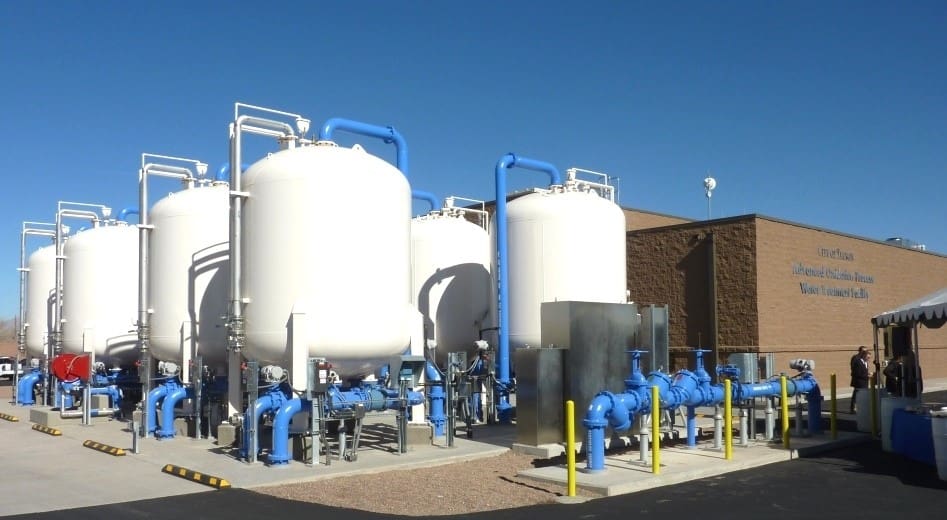Ingenious PFAS Therapy Solutions for Safer Water
The raising prevalence of PFAS contamination in water materials requires a crucial assessment of cutting-edge therapy solutions. In addition, arising bioremediation techniques use an even more lasting strategy to tackling PFAS challenges. pfas management.
Summary of PFAS Contamination
PFAS contamination has actually become a considerable environmental and public health and wellness issue. Per- and polyfluoroalkyl compounds (PFAS) are a group of synthetic chemicals understood for their determination in the atmosphere and human body, leading them to be typically described as "permanently chemicals." These substances have been widely made use of in various industries, including firefighting foams, water-repellent textiles, and food packaging, mainly because of their water- and grease-resistant buildings.
The widespread usage of PFAS has caused their detection in dirt, water products, and also in the blood of people and animals. Studies have connected PFAS direct exposure to many health and wellness issues, consisting of developing impacts in infants, immune system disorder, and different types of cancer cells. Additionally, the environmental perseverance of these substances complicates their deterioration and removal, elevating worries regarding long-term eco-friendly effects.
Regulatory bodies are increasingly implementing stringent standards to keep an eye on and decrease PFAS levels in alcohol consumption water and various other environmental mediums. As awareness of PFAS contamination expands, it has become necessary for neighborhoods and industries to look for efficient treatment remedies to minimize direct exposure and protect public wellness.
Advanced Filtering Technologies
As the necessity to attend to PFAS contamination heightens, advanced filtering technologies have arised as a critical component in the removal initiatives targeted at getting rid of these consistent chemicals from water resources. These technologies leverage sophisticated devices to efficiently target and catch PFAS substances, which are notoriously immune to standard treatment techniques.
Among the most promising approaches is the usage of granular turned on carbon (GAC), which adsorbs PFAS molecules due to its high surface and permeable structure. This technique has been widely carried out in both metropolitan and industrial settings, demonstrating substantial decreases in PFAS focus. In addition, ion exchange resins have obtained grip, specifically created to uniquely bind PFAS ions from water, thus facilitating their removal.
Membrane layer purification innovations, such as reverse osmosis and nanofiltration, additionally reveal efficiency in PFAS removal by physically separating pollutants from water - pfas management. These systems can accomplish high degrees of pureness, making them ideal for alcohol consumption water applications
Chemical Treatment Innovations
Countless chemical treatment technologies are being explored to properly attend to PFAS contamination in water materials. One promising technique entails the use of sophisticated oxidation procedures (AOPs), which use effective oxidants such as ozone, hydrogen peroxide, or chlorine dioxide integrated with UV light to break down PFAS compounds right into much less hazardous substances. This approach has actually shown efficiency in laboratory setups, showing potential for scalability in real-world applications.
Another innovative approach is the development of ion-exchange resins specifically designed to target PFAS. These materials can uniquely adsorb PFAS substances from water, permitting their elimination during therapy procedures. Recent developments have actually boosted the effectiveness and ability of these resins, making them a beneficial option for water therapy facilities.
Additionally, scientists are examining the usage of chemical representatives like persulfate and ferrous ions to enhance the degradation of PFAS in infected water. These agents can generate chain reaction that help with the breakdown of relentless PFAS compounds.
Arising Bioremediation Methods
Recent advancements in chemical therapy innovations have led the way for discovering bioremediation methods as a practical choice for addressing PFAS contamination. Bioremediation takes advantage of the natural metabolic procedures of microorganisms to break down or transform contaminants, making it an appealing method for tackling consistent pollutants like PFAS.
Emerging strategies in bioremediation consist of using genetically crafted microorganisms that can particularly target and break down PFAS compounds. These microbial stress are being developed for their improved destruction capabilities, boosting the performance of the remediation process. Furthermore, scientists are examining the capacity of plant-assisted bioremediation, where specific plant varieties may uptake and sequester PFAS from polluted dirt and water.
An additional promising technique is the application of bioaugmentation, which entails introducing useful special info microbes into contaminated settings to use this link increase the deterioration of PFAS. This approach can promote faster removal timelines and improve overall effectiveness.

Governing Structures and Requirements
A thorough governing framework is important for efficiently handling PFAS contamination and making sure public health and wellness defense. The raising acknowledgment of per- and polyfluoroalkyl materials (PFAS) as ecological toxins has actually prompted different government and state companies to develop criteria that govern their presence in water supplies. The United State Environmental Protection Agency (EPA) has actually developed wellness advisories and is pursuing setting enforceable limitations for PFAS in drinking water.
State-level regulations differ significantly, with some states adopting stricter guidelines than those recommended by the EPA. These laws commonly consist of maximum contaminant levels (MCLs) for specific PFAS substances, surveillance demands, and reporting responsibilities for water energies. Additionally, arising structures concentrate on the remediation of infected sites, emphasizing the demand for efficient treatment technologies.

Final Thought
In final thought, the advancement and application of ingenious PFAS treatment solutions are essential for resolving the prevalent problem of water contamination. Advanced filtration technologies, chemical therapies, and emerging bioremediation techniques collectively offer a complex approach to properly minimize and deteriorate PFAS degrees. As regulative frameworks continue to advance, integrating these technologies will certainly be vital to safeguard public health and bring back the honesty click reference of polluted water resources, ultimately adding to a cleaner and more secure environment.